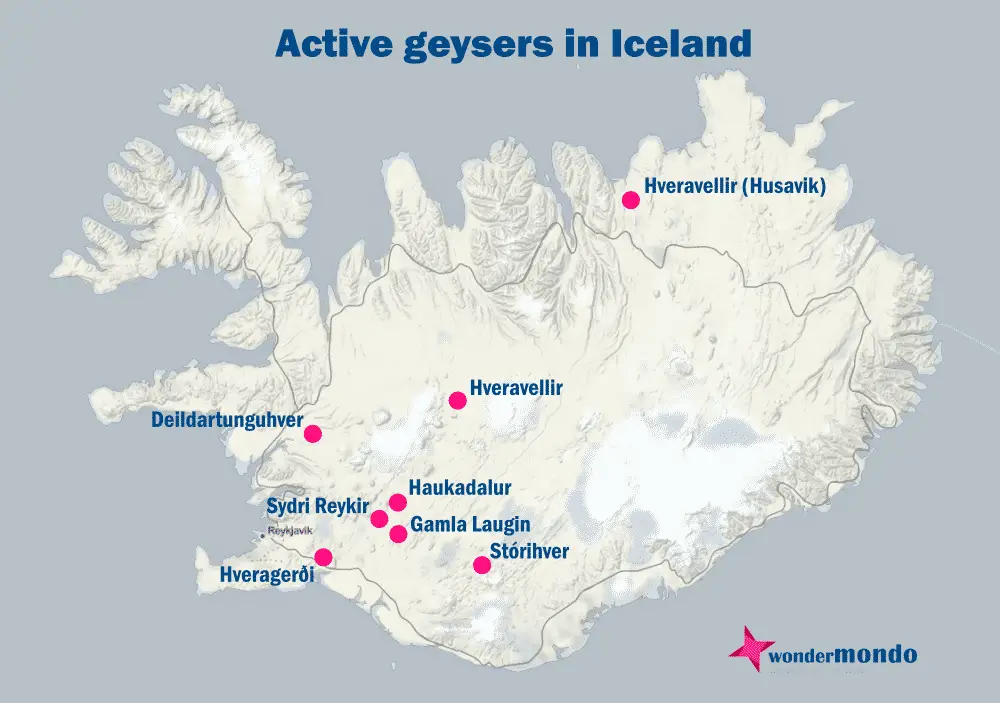Geysers 🢔 Geothermal features 🢔 Geological wonders 🢔 Categories of wonders
Wonder
Geysir
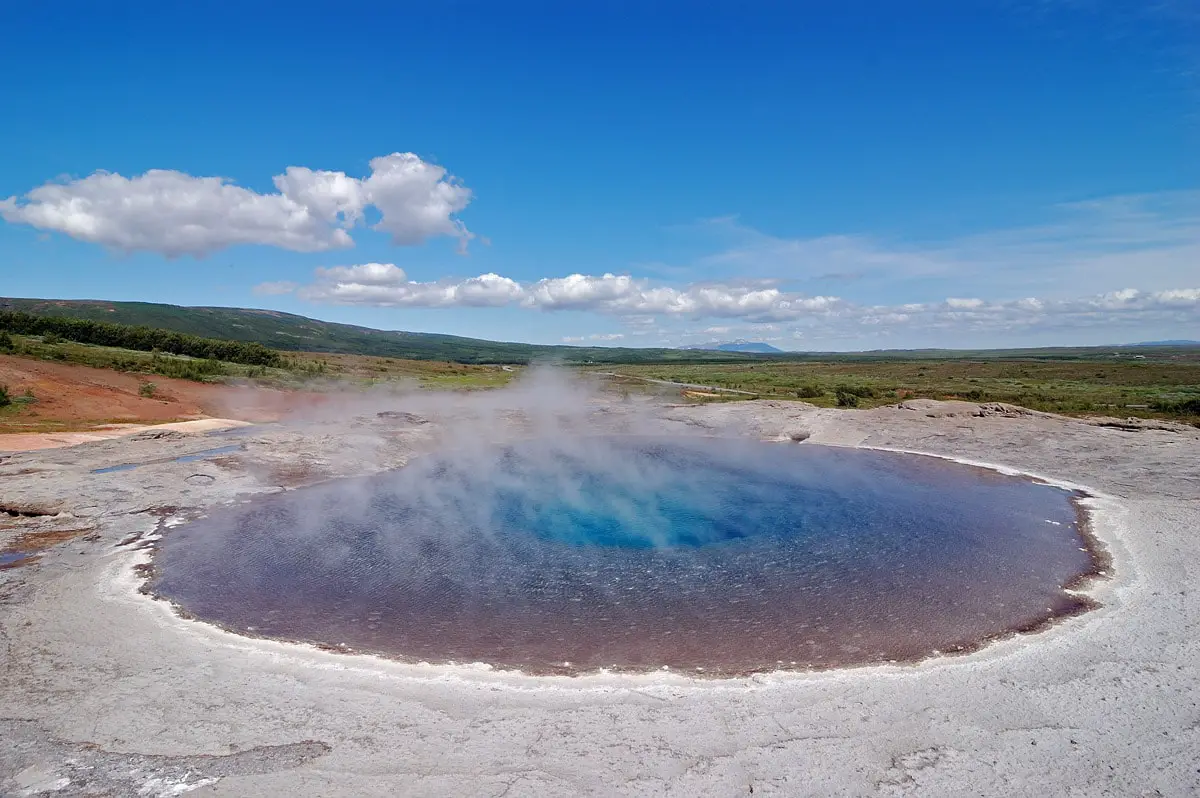
 In short
In short
Although there are some 1000 geysers in the world, the first "geyser" in the world is Geysir. This once powerful geyser gave a name to this spectacular phenomenon worldwide.
 58.4%
58.4%
GPS coordinates
Location, address
Height
Alternate names
Map of the site
If you see this after your page is loaded completely, leafletJS files are missing.
 In detail
In detail
The first geyser
Geysir is one of the main attractions in Haukadalur geothermal area next to Strokkur.
Although the chronicles mention hot springs here already in 1294, the placename Geysir first appears in written sources in the 18th century. This name comes from Old Norse "geysa" – to gush, to rush forth. This periodically erupting spring was such an unusual phenomenon for surprised Europeans that many did not believe that something like this can exist.
This landmark caused a flow of tourists to remote Iceland. People of the Age of Enlightenment were searching for an explanation of the nature of geysers. George Mackenzie considered that geyser is powered by steam, which is accumulated in some underground voids. The mechanism of geyser activity was discovered by the great German scientist Robert Bunsen in 1846 after he researched Geysir for 11 days.
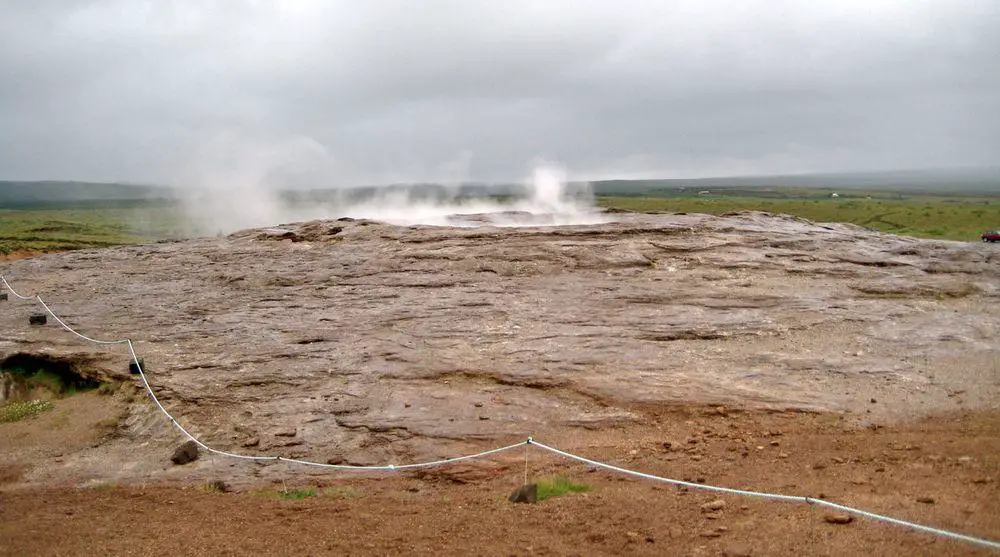
History of activity
Before the 20th century
Analysis of sinter sediments shows that this geyser is active for approximately 10,000 years.
Earthquakes in this part of Iceland are frequent and one-two times per century here take place strong earthquakes.
The geyser activity after these events is changing. Geysir is a graphic example of this.
In 1630 after such an earthquake it started very powerful eruptions – the whole area trembled during these eruptions.
In the first half of the 19th century Geysir was a renowned tourist attraction and it was erupting some 70 m high. Professor Bunsen estimated that in 1846 it was 43 – 54 m tall. This geyser was powerful also in the middle of the 19th century.
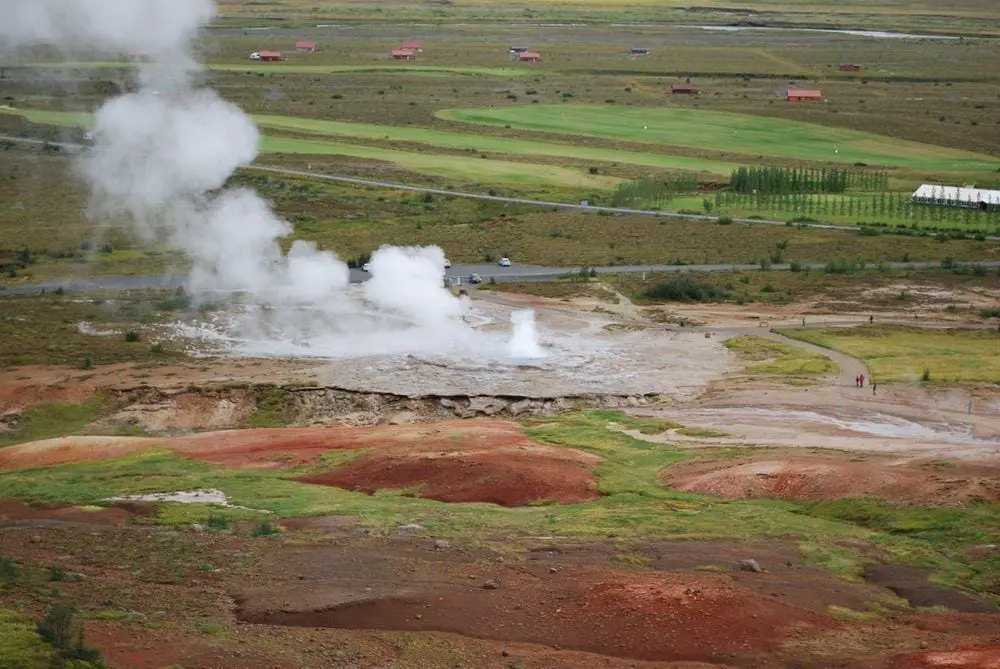
Before 1896 Geysir declined in activity and months could pass between eruptions. The neighboring Strokkur in meanwhile increased in activity.
20th and 21st century
Earthquakes at the turn of the 20th century revived the geyser – it erupted up to 60 m high, even once per hour.
In coming years the activity slowly decreased. Tourists wanted to see the spectacle and threw in the geyser stones and other objects. Initially it helped but finally the spring got blocked.
In 1915 Geysir was dormant. In 1935 it was reactivated when water level in the bowl was decreased by a ditch in the sinter rim. This was done by professor Trausti Einarsson and farmer Jón from Laug.
The measured height of Geysir eruptions in 1937 were up to 60 m.
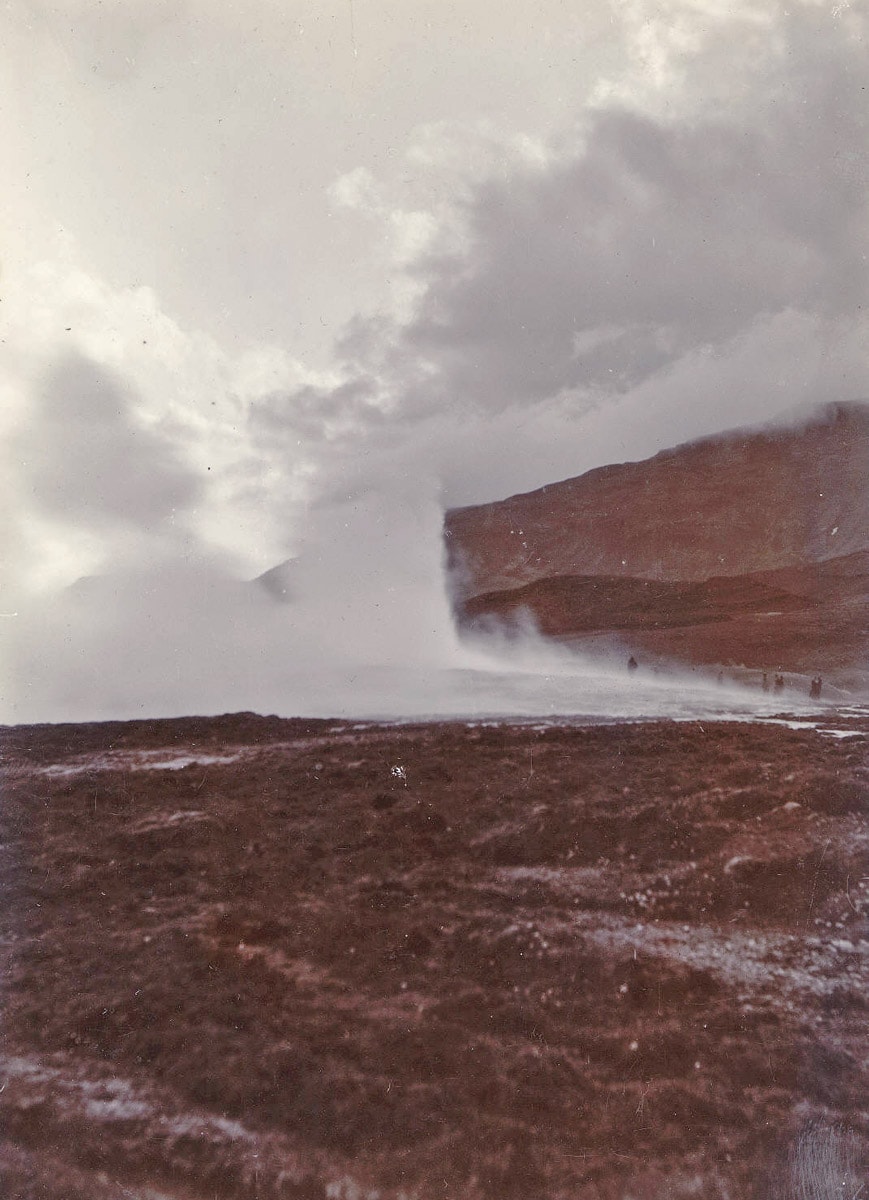
In 1981 the ditch was cleaned again and geyser was activated by soap to make a movie. Now this is strictly forbidden.
After earthquakes on June 17 and 21, 2000 there were signs of activity – Geysir was erupting 8 – 10 m high. Since 2005 it again became weaker. In 2010 it erupted approximately once per day.
The giant hot spring
Geysir is by far the largest hot spring in Haukadalur. It is also the northernmost large hot spring in Haukadalur: there is just a group of fumaroles further north.
Upper part of the Geysir plumbing system has been researched: this is an enormous bowl which is lined with sinter. This bowl is 20 m in diameter, 1 m deep. In its center starts at least 23 m deep and approximately 1 m wide flow channel which narrows at depth.
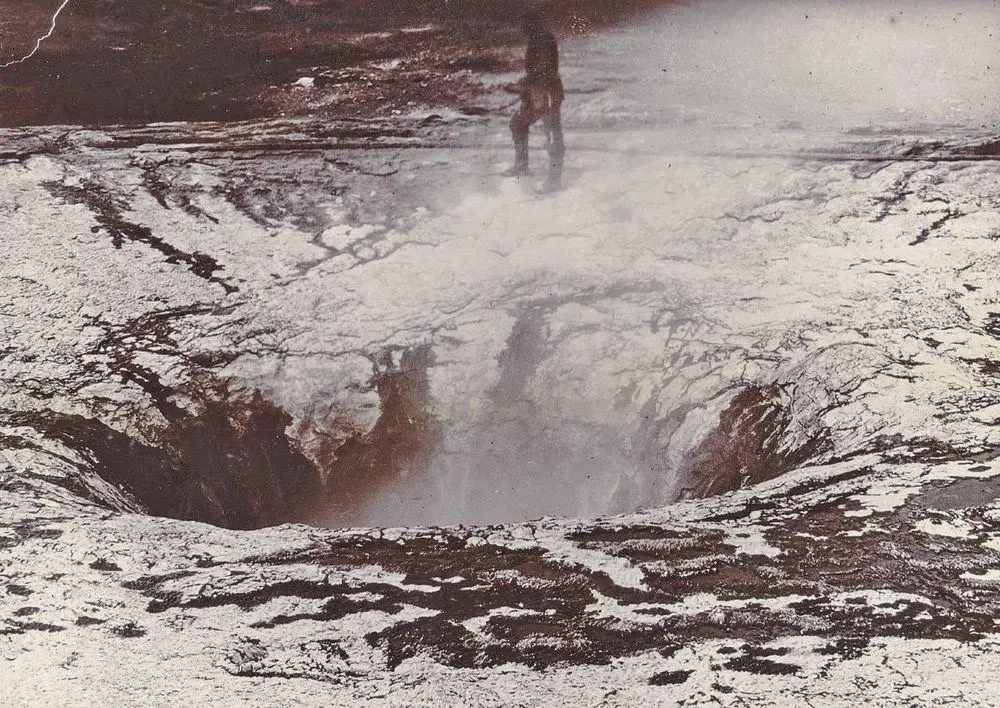
Now this geyser has low eruptions, but at its "good times" Geysir erupted for half an hour in several phases – after the first phase from the dried well suddenly bursted a very powerful fountain, sometimes reaching even 100 m height.
Now the temperature at the surface of spring is 73° C, but in 23 m depth – 120°C!
Water of Geysir contains the most of dissolved SiO2 in Haukadalur.
It is very possible that in future, after an earthquake Geysir will offer spectacular eruptions again.
References
- Suzan Pasvanoglu, Hrefna Kristmannsdóttir, Sveinbjörn Björnsson, Helgi Torfason, Geochemical Study of the Geysir Geothermal Field in Haukadalur, S-Iceland, Proceedings World Geothermal Congress 2000. Accessed on July 12, 2011.
- Robert Allan, On the condition of the Haukedalr Geysers of Iceland, July, 1855.
Webcam!
- Míla Webcamera with both Geysir and Strokkur visible, accessed on July 15, 2011. Looks great!
Geysir is included in the following article:
 Linked articles
Linked articles
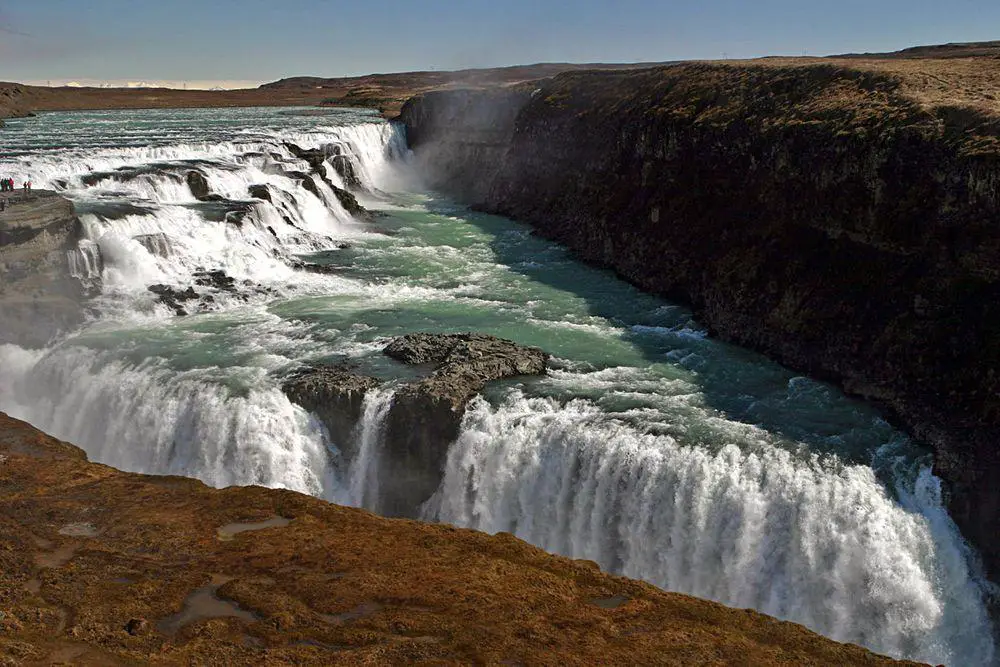
Wonders of Iceland
Iceland is very rich with peculiar natural landmarks and the island contains also interesting cultural landmarks. The highlights of Iceland are the magnificent waterfalls as well as geysers and other geothermal features.
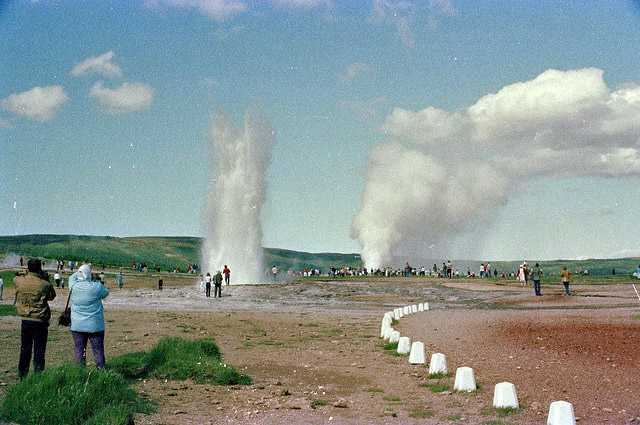
Geysers
Hasty hydrogeologists would say: geysers are thermodynamically and hydrodynamically unstable hot springs. “Normal” people would say – geysers are hot springs that at more or less regular intervals shoot up a fountain of boiling water and steam. Sometimes these fountains are even 100 m tall… or even 450 m!
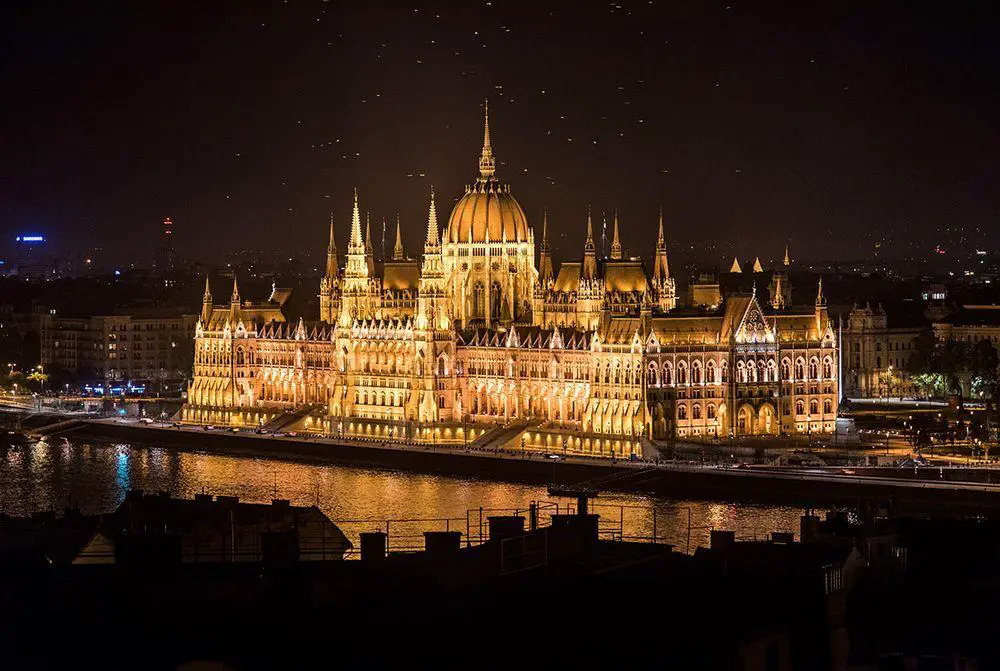
Wonders of Europe
The heritage of Europe is diverse and endlessly interesting. Incomparably rich is the wealth of European historical architecture, but this part of the world has exciting natural heritage and archaeological heritage as well.
 Recommended books
Recommended books
Iceland Travel Guide
Iceland Travel Guide Introduction This book includes all the necessary links for an easy journey to your Icelandic adventure. To make your Iceland travel more entertaining and full of all of the things that you want, you’ll see a step-by-step route around the entire country, indicating the distance in miles, accommodations, recreation, entertainment, shopping, and much more. This Iceland travel guide will be the perfect companion to see all of the hottest spots, like Blue Lagoon, Iceland, and other must-sees.
The Glorious Geology of Iceland’s Golden Circle
This is the first book describing the glorious geology of Iceland’s Golden Circle and four additional excursions:(1) the beautiful valleys and mountains of the fjord of Hvalfjördur, (2) the unique landscape and geothermal fields of the Hengill Volcano, (3) the explosion craters, volcanic fissures, and lava fields of the Reykjanes Peninsula, and (4) the volcanoes (Hekla, Eyjafjallajökull, Katla), waterfalls, sandur plains, and rock columns of South Iceland. The Golden Circle offers a unique opportunity to observe and understand many of our planet’s forces in action.

